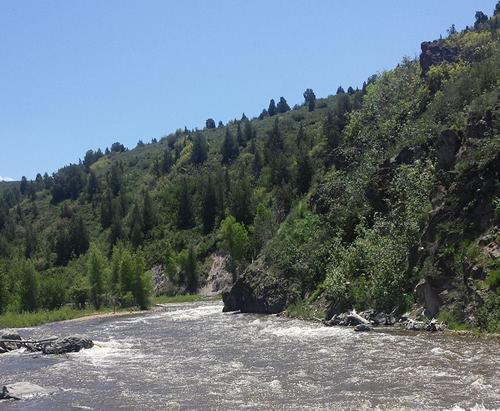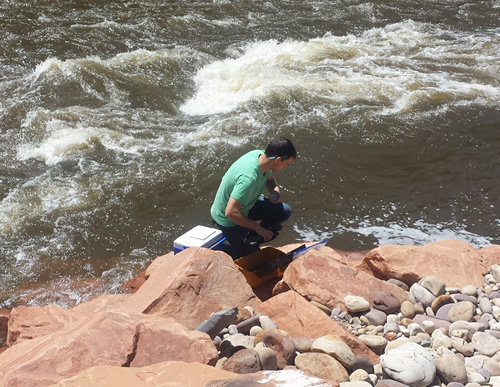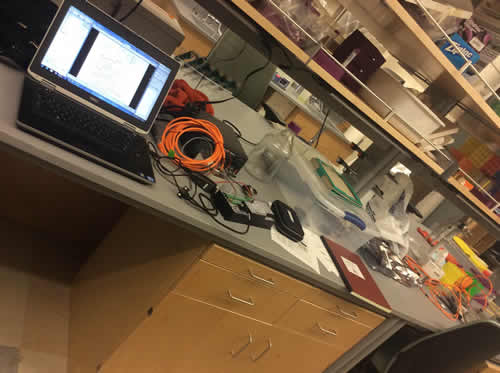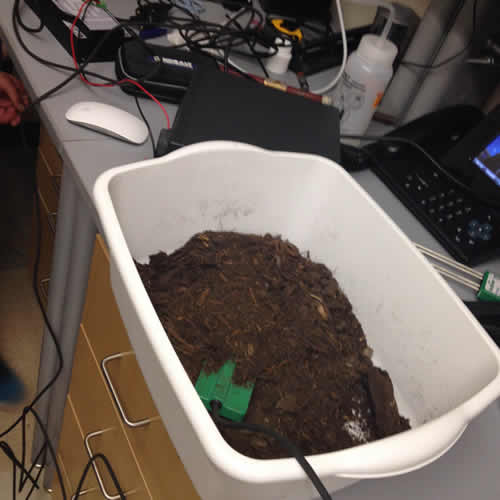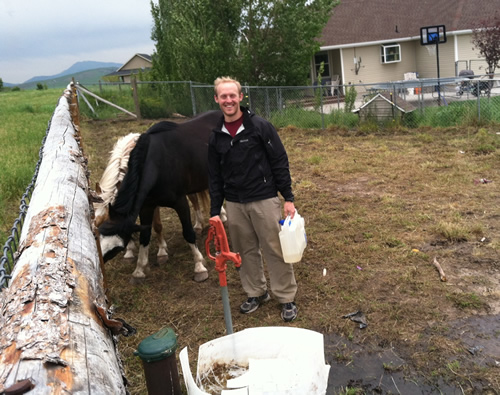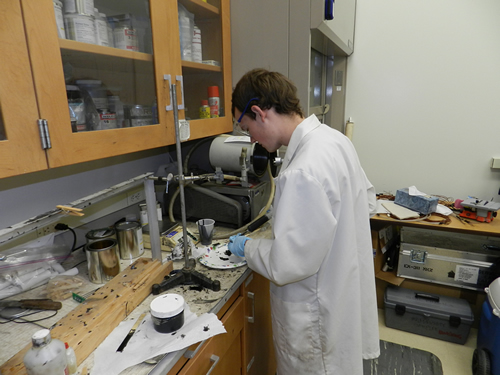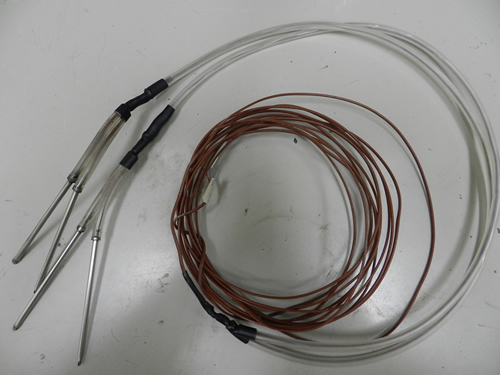iUTAH Undergraduate iFellows
Week 3 Recap
June 1-5, 2015
Kyle Ahn
 This was a big week for me. The project of analyzing total mercury and methylmercury in sediment samples began. This is the main project that I will collaborate with our team on. Various field samples from the iUTAH Provo locations were collected and it is my job to prepare the samples to be analyzed. This task is one of the main purposes for my help this summer. As such, it is very exciting to participate in and learn how this process works. There is still much more to be done on these samples and I look forward to seeing the results.
This was a big week for me. The project of analyzing total mercury and methylmercury in sediment samples began. This is the main project that I will collaborate with our team on. Various field samples from the iUTAH Provo locations were collected and it is my job to prepare the samples to be analyzed. This task is one of the main purposes for my help this summer. As such, it is very exciting to participate in and learn how this process works. There is still much more to be done on these samples and I look forward to seeing the results.
Amanda Araujo
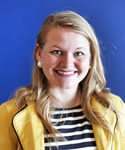 This week we got a lot figured out! The sensors are coming along very nicely. Things are becoming less complicated as we are figuring out each new step for wiring, coding, and connecting the sensors. We have figured out, completed, and tested the soil moisture sensors as a trial-run sensor. We also figured out that must wire and re-wire some of the CO2 sensors to be able to connect to Loggernet with a voltage instead of a current.
This week we got a lot figured out! The sensors are coming along very nicely. Things are becoming less complicated as we are figuring out each new step for wiring, coding, and connecting the sensors. We have figured out, completed, and tested the soil moisture sensors as a trial-run sensor. We also figured out that must wire and re-wire some of the CO2 sensors to be able to connect to Loggernet with a voltage instead of a current.
Viviane Baji
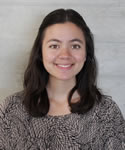 This week the team was in the Salt Lake area again to survey another part of the valley. We were able to survey hundreds of people during our four days there. Our week wrapped up on Saturday evening. From here on out we will be analyzing the data we have collected which will be very exciting!
This week the team was in the Salt Lake area again to survey another part of the valley. We were able to survey hundreds of people during our four days there. Our week wrapped up on Saturday evening. From here on out we will be analyzing the data we have collected which will be very exciting!
Jesse Fleri
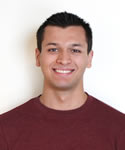
It was a busy week. We have been breaking down papers to write new procedures for several tests we are going to be conducting in the coming weeks. We placed frames in for Chelsea's project and I collected my first round of sediment and water samples on Tuesday. The water was significantly higher then expected and hopefully I'll be picking up some waders before we go out again. Overall, it was a new and exciting week.
Joshua Gathro
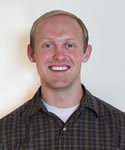 Wow, what a busy week! On Monday we had our second cohort session, which went really well. It was a great chance to mingle with the other iFellows, learn about poster presentations, and to go visit a couple GAMUT stations. It was fun to hear how everyone's first few weeks of research have been. Tuesday I met with a geochemist on campus and his undergraduate researcher to collaborate on our projects. They have collected and preserved samples from nearby geothermal springs that we at the water lab are going to analyze for anions and trace elements, including arsenic. Wednesday and Thursday I spent learning more laboratory procedures in order to prepare the samples for analysis. I'm eager to get the results back and to see what we find. On Friday, Will Fullmer and I went out sampling wells again in order to see how the chemical parameters have changed since last November. I'm getting more confident with all the procedures and I'm learning a lot on this project.
Wow, what a busy week! On Monday we had our second cohort session, which went really well. It was a great chance to mingle with the other iFellows, learn about poster presentations, and to go visit a couple GAMUT stations. It was fun to hear how everyone's first few weeks of research have been. Tuesday I met with a geochemist on campus and his undergraduate researcher to collaborate on our projects. They have collected and preserved samples from nearby geothermal springs that we at the water lab are going to analyze for anions and trace elements, including arsenic. Wednesday and Thursday I spent learning more laboratory procedures in order to prepare the samples for analysis. I'm eager to get the results back and to see what we find. On Friday, Will Fullmer and I went out sampling wells again in order to see how the chemical parameters have changed since last November. I'm getting more confident with all the procedures and I'm learning a lot on this project.
Natasha Griffin
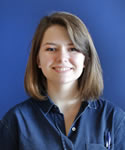 This week we started training on DNA extraction. I filtered water samples and used an extraction kit and a spectrophotometer to determine DNA concentration. The results were a little weird, so we began planning an experiment that we'll do next week to determine which extraction methods work best. Our new primers arrived and the gene cloning kit should come soon so I've also been researching how plasmids are used to make standard curves for qPCR.
This week we started training on DNA extraction. I filtered water samples and used an extraction kit and a spectrophotometer to determine DNA concentration. The results were a little weird, so we began planning an experiment that we'll do next week to determine which extraction methods work best. Our new primers arrived and the gene cloning kit should come soon so I've also been researching how plasmids are used to make standard curves for qPCR.
Sawyer Hill
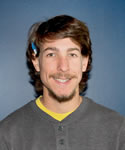 We have continued monitoring the LEMS stations around campus and are learning how to program in MatLab as a means of quality checking the data we are collecting. We also finally ran our albedo experiment, which consisted of us dragging our "albedometer" across campus and taking data in five different locations. Rain started falling at the same time we started collecting data which made for in interesting experience of shielding the laptop used to run the program under an umbrella and shielding the data logger and battery under a blanket. After all was said and done we had collected some quality data and should be able to find the albedo, or reflectivity, of the surface on that part of campus where we will be installing sap flux equipment down the road.
We have continued monitoring the LEMS stations around campus and are learning how to program in MatLab as a means of quality checking the data we are collecting. We also finally ran our albedo experiment, which consisted of us dragging our "albedometer" across campus and taking data in five different locations. Rain started falling at the same time we started collecting data which made for in interesting experience of shielding the laptop used to run the program under an umbrella and shielding the data logger and battery under a blanket. After all was said and done we had collected some quality data and should be able to find the albedo, or reflectivity, of the surface on that part of campus where we will be installing sap flux equipment down the road.
Joseph Ipson
 After wiring together two extra thermocouples, it came time to put metal tips on all of them. I've been training a fair amount with Jobie, who put some tubing on the thermocouples to protect them from rodents. He then got me started with cutting out metal tips and filling them with thermally conductive epoxy. They could then be put over the temperature measuring ends of the thermocouple wires. Later in the week, I also went with Kay to get soil samples so we could get a value for the soil's bulk density.
After wiring together two extra thermocouples, it came time to put metal tips on all of them. I've been training a fair amount with Jobie, who put some tubing on the thermocouples to protect them from rodents. He then got me started with cutting out metal tips and filling them with thermally conductive epoxy. They could then be put over the temperature measuring ends of the thermocouple wires. Later in the week, I also went with Kay to get soil samples so we could get a value for the soil's bulk density.
Matthew Johnson
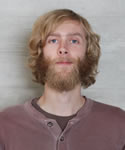 My team and I have had a productive week in the West Valley City area collecting data. It has been interesting meeting and conversing with people about water issues in their different communities as well as listening to their different perspectives and experiences. We had a big collection effort this week and the sun has been draining, but having such a great team helps keep the process refreshed and helps everything run smoothly. I am excited to get back up to Logan and look at the data with new eyes and a more specific research topic.
My team and I have had a productive week in the West Valley City area collecting data. It has been interesting meeting and conversing with people about water issues in their different communities as well as listening to their different perspectives and experiences. We had a big collection effort this week and the sun has been draining, but having such a great team helps keep the process refreshed and helps everything run smoothly. I am excited to get back up to Logan and look at the data with new eyes and a more specific research topic.
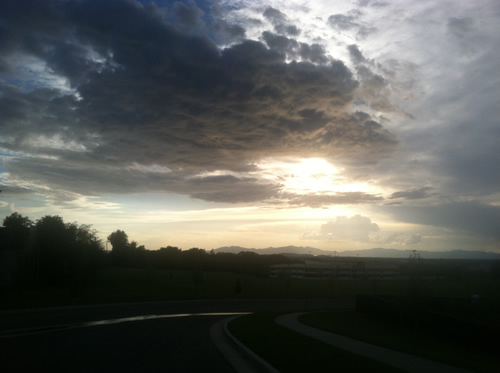
View just West of Weber State campus after returning home from collecting survey data in the Salt Lake City area on Saturday
Heather King
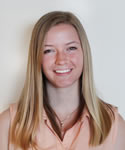 On Monday of week three, the cohort met for our second time at Utah State University where we visited two GAMUT sites and discussed important components of a research poster and learned about diversity awareness. Back at the University of Utah we began exploring how to build and install a rooftop Local Energy Measurement Station on one of the engineering buildings. We were also able to test our albedo measurement device, and continued collecting the LEMS data to be analyzed.
On Monday of week three, the cohort met for our second time at Utah State University where we visited two GAMUT sites and discussed important components of a research poster and learned about diversity awareness. Back at the University of Utah we began exploring how to build and install a rooftop Local Energy Measurement Station on one of the engineering buildings. We were also able to test our albedo measurement device, and continued collecting the LEMS data to be analyzed.
Don Long
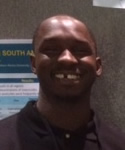 This week was more intensive than the former as we began to execute our experimental design. We have three big sites where we will be testing the effects of nutrients and pharmaceuticals on biofilms: Logan, Red Butte, and Provo River. We manufactured thirteen different treatments and 130 replicates! It was a monumental task that was completed with the help of two USU Native American interns named Logan and Dino. We then deployed the replicates into the Red Butte River with the help of Michelle Baker, Caitlyn Lewis, Dino, and Logan. The rivers were then measured for various parameters such as temperature, dissolved oxygen, and light penetration. Long hours were spent on the job this week and we still have two more sites to repeat the process! This was a very exciting week. I am eager for the weeks ahead!
This week was more intensive than the former as we began to execute our experimental design. We have three big sites where we will be testing the effects of nutrients and pharmaceuticals on biofilms: Logan, Red Butte, and Provo River. We manufactured thirteen different treatments and 130 replicates! It was a monumental task that was completed with the help of two USU Native American interns named Logan and Dino. We then deployed the replicates into the Red Butte River with the help of Michelle Baker, Caitlyn Lewis, Dino, and Logan. The rivers were then measured for various parameters such as temperature, dissolved oxygen, and light penetration. Long hours were spent on the job this week and we still have two more sites to repeat the process! This was a very exciting week. I am eager for the weeks ahead!
Zack Oldroyd
 My third week as an iFellow started with a meeting with the rest of the iFellows at the Innovation campus at Utah State University. After some meetings, presentations, and lunch, we went out into the field to check out some of the equipment that is being used to collect iUTAH data. On Tuesday, we began our public intercept process by going to multiple parks throughout Logan and talking to people about water. Tuesday was great because it allowed us to try out some of our ideas with interviewing. We took the ideas that worked, refined the process a bit, and are now ready to dive back in to the interviewing process.
My third week as an iFellow started with a meeting with the rest of the iFellows at the Innovation campus at Utah State University. After some meetings, presentations, and lunch, we went out into the field to check out some of the equipment that is being used to collect iUTAH data. On Tuesday, we began our public intercept process by going to multiple parks throughout Logan and talking to people about water. Tuesday was great because it allowed us to try out some of our ideas with interviewing. We took the ideas that worked, refined the process a bit, and are now ready to dive back in to the interviewing process.
Elizabeth Tanner
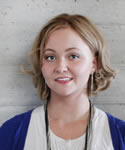 During the third week of my iUTAH fellowship I researched different bodies of water that are relevant to a survey that was sent out by a team my mentor, Philip, researched with. With this survey we are hoping to determine whether living near a river or stream affects the way people think about water policy and conservation. If there is a correlation, different variables that will be looked at will include water size, type, and whether or not there are leisure activities available on the water. I’ve spent a lot of time this week trying to come up with a “scenic grade” for these canals and rivers, which I’ve discovered is pretty difficult if you’ve never been to the area!
During the third week of my iUTAH fellowship I researched different bodies of water that are relevant to a survey that was sent out by a team my mentor, Philip, researched with. With this survey we are hoping to determine whether living near a river or stream affects the way people think about water policy and conservation. If there is a correlation, different variables that will be looked at will include water size, type, and whether or not there are leisure activities available on the water. I’ve spent a lot of time this week trying to come up with a “scenic grade” for these canals and rivers, which I’ve discovered is pretty difficult if you’ve never been to the area!
André Valle
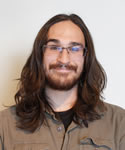
Week #3 was a really dynamic week for the Utah Water Voices project here up at USU. Monday was our cohort session, and we learned about plants in space and the psychology of great research posters. We also discussed world diversity and LGBTQ matters (personally, I have mega kudos to iUTAH's EOD program for this). In iFellow life, we started to get out in the field a little bit more this week collecting data and thus began to get 'bruised' a little bit as we tested out our public intercept methodologies. Again, we're doing interviews with the public next to and along the Logan River traveling along the mountain through urban gradient. As a team we developed our informed consent letter, refined our research questions, and invented an interactive PDF that the public will utilize via iPad while we perform our interviews. We also learned more about data scrubbing and cleaning processes that will pair with our incoming data that we'll collect throughout the summer. Outside of iFellow life I went out on a hike with the USU Outdoor Rec Program this week up on Crimson Trail in Logan Canyon for the full moon that night. It was a beautiful hike and met some really nice people with shared academic interests.
Jamie Vawdrey
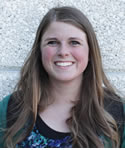 This week has been really exciting. I have continued to study the project area and read a lot of literature. I have also been able to start using ArcGIS to get familiar with the area for the project. We have also started to prepare some of the materials to do some fieldwork.
This week has been really exciting. I have continued to study the project area and read a lot of literature. I have also been able to start using ArcGIS to get familiar with the area for the project. We have also started to prepare some of the materials to do some fieldwork.
Darianne Willey
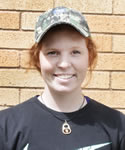 Ryan Dupont and I took our visiting Blanding students, Ashley and Ty, to collect samples at various sites within one stormwater treatment area in Salt Lake City along the Jordan River. The samples will be analyzed to develop baseline information to compare to any changes implemented in the system.
Ryan Dupont and I took our visiting Blanding students, Ashley and Ty, to collect samples at various sites within one stormwater treatment area in Salt Lake City along the Jordan River. The samples will be analyzed to develop baseline information to compare to any changes implemented in the system.
Shannon Williams
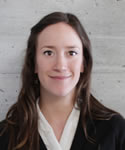 Week 3 has been comprised of determining which variables from last week's research are significant enough to impact water use between and among eight neighborhoods. These variables will hopefully work to predict future water use and trends in urban areas in Utah. This week outlined major goals for the remainder of iUTAH and gave me some long-term perspective.
Week 3 has been comprised of determining which variables from last week's research are significant enough to impact water use between and among eight neighborhoods. These variables will hopefully work to predict future water use and trends in urban areas in Utah. This week outlined major goals for the remainder of iUTAH and gave me some long-term perspective.
Margaret Wolf
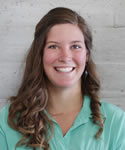 This week I have been developing my own project. I have come up with a few different research questions that I want to explore mostly concerning rainwater runoff. I have developed a research plan to "stimulate rain events" and basically be able to see how the chemistry of rain water changes as it runs over different surfaces like parking lots, grassy areas or native ecosystems. I am doing this in addition to collecting storm water samples whenever there is a rain event, but this is a way to experimentally construct a rain event without having to wait for the weather. I am excited to almost be complete with the panning process and begin to actually run experiments. This week I was also able to visit the Red Butte Creek reservoir dam and see how the Utah Water Conservancy regulated the flows for the reservoir and the fish within it.
This week I have been developing my own project. I have come up with a few different research questions that I want to explore mostly concerning rainwater runoff. I have developed a research plan to "stimulate rain events" and basically be able to see how the chemistry of rain water changes as it runs over different surfaces like parking lots, grassy areas or native ecosystems. I am doing this in addition to collecting storm water samples whenever there is a rain event, but this is a way to experimentally construct a rain event without having to wait for the weather. I am excited to almost be complete with the panning process and begin to actually run experiments. This week I was also able to visit the Red Butte Creek reservoir dam and see how the Utah Water Conservancy regulated the flows for the reservoir and the fish within it.

